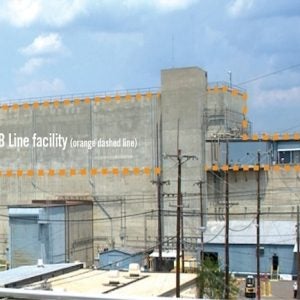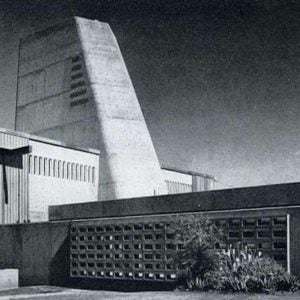 Romanian nuclear utility Societatea Nationala Nuclearelectrica (SNN) and the European Investment Bank (EIB) have signed a loan agreement worth €145m ($159m) to support completion of Europe’s first Tritium Removal Facility (CTRF) at the Cernavoda NPP. The CTRF will remove the tritium from reactor’s coolant and moderator (heavy water), leading to increased protection of the environment, public and employees’ occupational health and safety.
Romanian nuclear utility Societatea Nationala Nuclearelectrica (SNN) and the European Investment Bank (EIB) have signed a loan agreement worth €145m ($159m) to support completion of Europe’s first Tritium Removal Facility (CTRF) at the Cernavoda NPP. The CTRF will remove the tritium from reactor’s coolant and moderator (heavy water), leading to increased protection of the environment, public and employees’ occupational health and safety.
The project will enhance radiation safety of the power plant, further reduce the volume of radioactive wastes, prioritising the well-being of the workers and allowing for the coolant and moderator (heavy water) to be re-used, after tritium removal, SNN said. Successful completion of the project will allow for regular maintenance, refurbishments, and eventually decommissioning to be undertaken more easily, safely and efficiently. The CTRF will include liquid phase isotopic separation, cryogenic distillation and high-vacuum operation. The tritium extracted will be stored in secure and safe specialised containers ready for future use.
SNN CEO Cosmin Ghiță said the project is part of an investment plan to develop the nuclear sector in line with national energy policy, as outlined by the government. “Using a Romanian innovative technology, developed by the Romanian National Research & Development Institute for Cryogenic & Isotopic Separation Technologies (ICSI – Institutul Naţional de Cercetare-Dezvoltare pentru Tehnologii Criogenice şi Izotopice Rm,Valcea), the CTRF will be the world’s third and Europe’s first Tritium Removal Facility and will give Romania the opportunity to become a European hub for tritium production and export – the fuel candidate of future clean fusion reactors. We are happy to implement a Romanian innovative technology, based on years of research and development, a true statement of Romania’s leadership in nuclear industry.”
EIB Vice-President Kyriacos Kakouris said the EIB is financing sustainable energy projects worldwide. The EIB’s approach to nuclear projects was defined in its Energy Lending Criteria 2013 and has remained unchanged. The Bank said it “adopts a technology neutral approach in line with the European Union’s decarbonisation goal and the objectives of ensuring security of energy supply and competitiveness in an environmentally sustainable, cost-efficient, effective, safe and socially acceptable way”.
The project has been subject to an Environmental impact assessment (EIA) process including public consultations and the transboundary context. The decision of the competent authority was issued in January 2023.
Cernavoda is Romania's only NPP, and has two commercially operational Candu 6 pressurised heavy water reactors supplied by Atomic Energy of Canada Ltd. Construction of the two-unit station began in the early 1980s. The 700 MWe Cernavoda 1 was commissioned in December 1996 and Cernavoda 2 in 2007. Construction of three more units began, but was stopped in 1990. Cernavoda 1&2 supply about one-fifth of Romania’s electricity. The Cernavoda 3&4 project aims to complete two further Candu 6 reactors.
Image: The Cernavoda nuclear power plant (courtesy of Nuclearelectrica)






